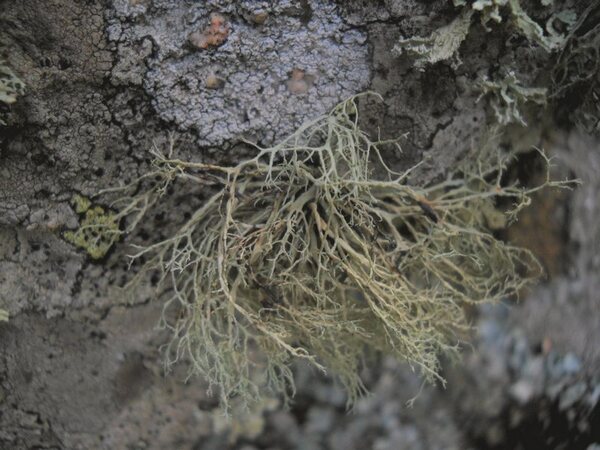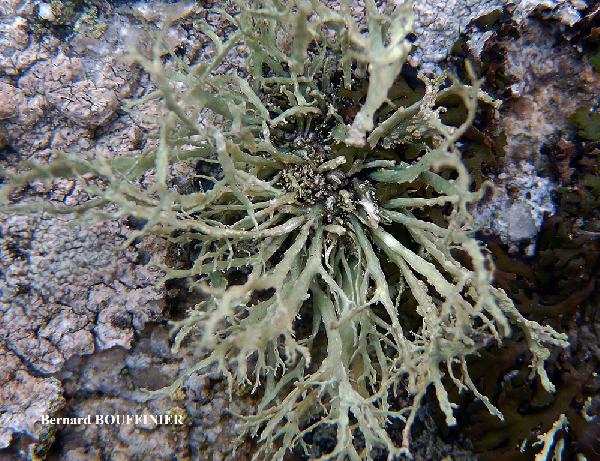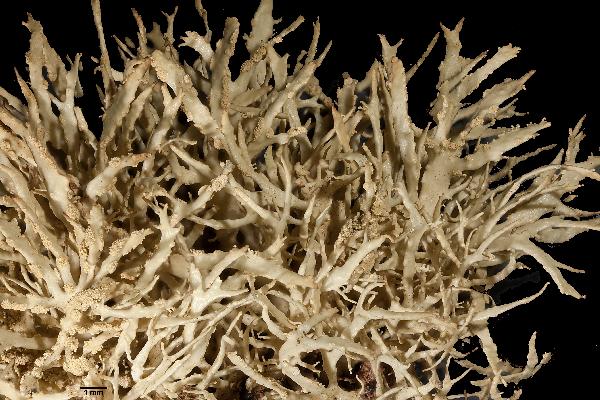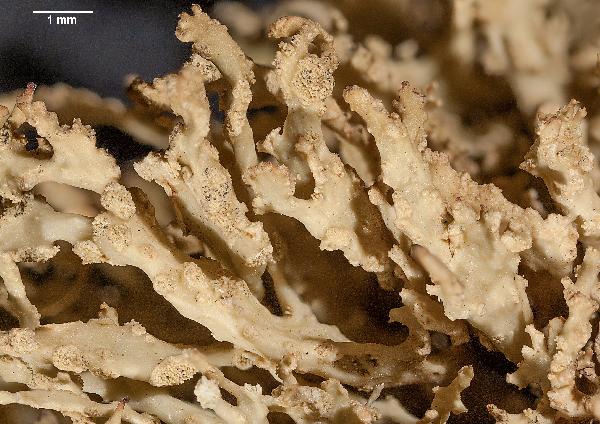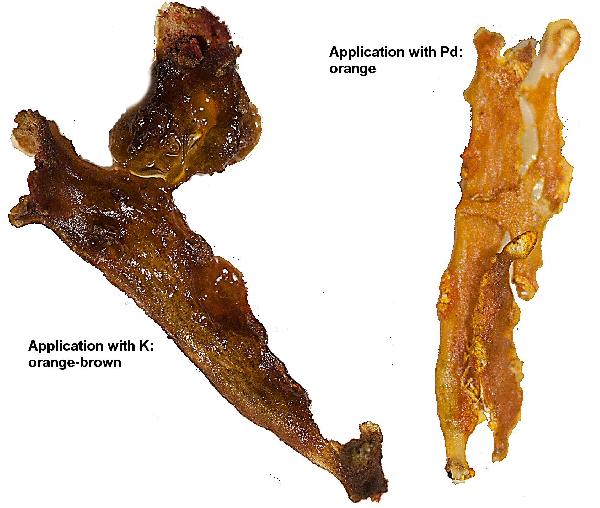Ramalina subfarinacea (Cromb.) Nyl.
Bull. Soc. Linn. Normandie, sér. 2, 6: 258, 1872. Basionym: Ramalina scopulorum var. subfarinacea Nyl. ex Cromb. - J. Bot. London, 10: 74, 1872.
Synonyms: Ramalina angustissima (Anzi) Vain.; Ramalina farinacea f. saxicola Jatta; Ramalina farinacea var. angustissima Anzi; Ramalina farinacea var. rubescens Räsänen
Distribution: N - Ven (Lazzarin 2000b), Emil (Tretiach & al. 2008, Fariselli & al. 2020), Lig. C - Tosc, Laz, Abr, Sar (Monte 1993, Nöske 2000, Zedda 2002, Rizzi & al. 2011, Cossu & al. 2015). S - Camp, Bas, Cal (Puntillo 1996), Si (Ottonello & Romano 1997, Czeczuga & al. 1999, Iacolino & Ottonello 2006, Ottonello & al. 2006d, 2011, Liistro & Cataldo 2011).
Description: Thallus fruticose, yellowish green, shrubby or tufted, pendulous in very well-developed specimens, to 5(-7) cm long, irregularly or dichotomously branched from a spreading basal holdfast, often forming extensive swards. Branches solid, flattened but not dorsiventral, 0.5-3 mm wide, smooth, with well-delimited, elliptical to round, flat to excavate, marginal soralia bearing granular soredia. Cortex 2-layered, the outer part paraplectenchymatous, the inner part of cartilaginous chondroid strands; medulla white, compact. Apothecia very rare (not observed in Italian material). Photobiont chlorococcoid. Spot tests and chemistry: cortex with usnic acid; medulla and soralia with four chemotypes: 1) K- or orange-brown, P+ orange-red, UV- (protocetraric acid), 2) K+ yellow then red, P+ yellow-orange, UV- (salazinic acid and traces of norstictic acid), 3) K-, P-, UV+ blue-white (hypoprotocetraric acid), and, 4) K-, P-, UV- (no lichen substances). Note: on siliceous and weakly calcareous rocks in humid, but very open situations. The molecular study by Spjut & al. (2020) showed that the R. farinacea-complex includes two clades, both with corticolous and saxicolous samples, so that the classical taxonomy of this species complex is not supported by molecular inferences. Pending a general revision of Italian material, I maintain here saxicolous specimens under R. subfarinacea.
Growth form: Fruticose
Substrata: rocks
Photobiont: green algae other than Trentepohlia
Reproductive strategy: mainly asexual, by soredia, or soredia-like structures (e.g. blastidia)
Most common in areas with a humid-warm climate (e.g. most of Tyrrenian Italy)
Commonnes-rarity: (info)
Alpine belt: absent
Subalpine belt: absent
Oromediterranean belt: absent
Montane belt: absent
Submediterranean belt: extremely rare
Padanian area: absent
Humid submediterranean belt: rare
Humid mediterranean belt: very rare
Dry mediterranean belt: absent

Predictive model
Herbarium samples
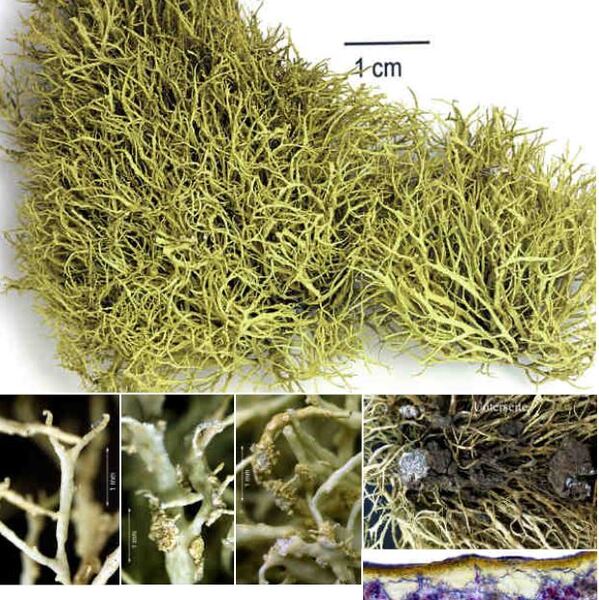

Felix Schumm – CC BY-SA 4.0
Image from: F. Schumm (2008) - Flechten Madeiras, der Kanaren und Azoren. Beck, OHG - ISBN: 978-3-00-023700-3
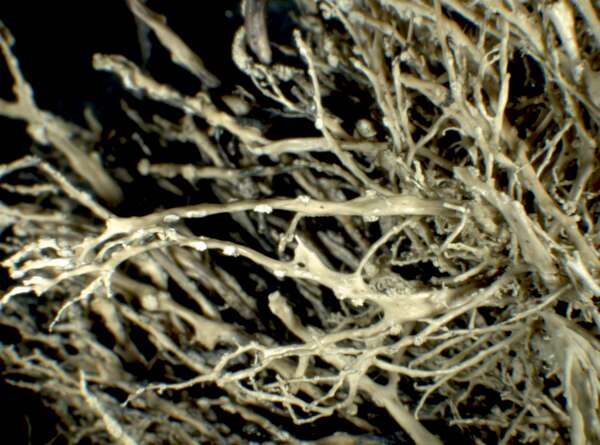

P.L. Nimis; Owner: Department of Life Sciences, University of Trieste
Herbarium: TSB (13204)
2001/12/07

Felix Schumm - CC BY-SA 4.0
[10312], Spanien, Kanarische Inseln, La Gomera, westlich von Arure am Weg zum Mirador del Santo (Eremita del Santo), 28°07.9' N, 17°19.3' W, 820 m; wind-, nebel und lichtoffene, NO-exponierte Basaltfelsen mit viel Roccella und Ramalina. Leg. et det. Schumm 18.04.2003
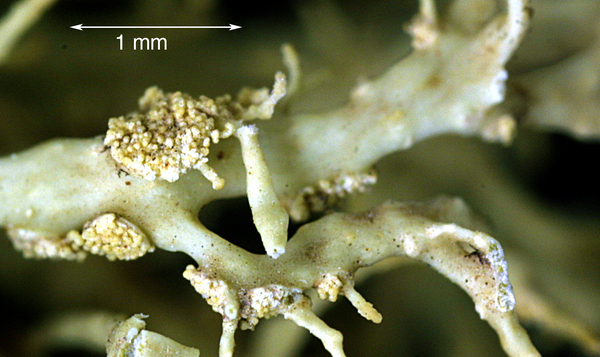
Felix Schumm - CC BY-SA 4.0
[10312], Spanien, Kanarische Inseln, La Gomera, westlich von Arure am Weg zum Mirador del Santo (Eremita del Santo), 28°07.9' N, 17°19.3' W, 820 m; wind-, nebel und lichtoffene, NO-exponierte Basaltfelsen mit viel Roccella und Ramalina. Leg. et det. Schumm 18.04.2003
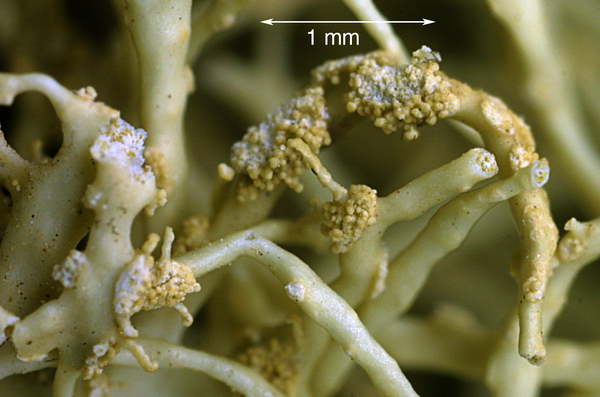
Felix Schumm - CC BY-SA 4.0
[10312], Spanien, Kanarische Inseln, La Gomera, westlich von Arure am Weg zum Mirador del Santo (Eremita del Santo), 28°07.9' N, 17°19.3' W, 820 m; wind-, nebel und lichtoffene, NO-exponierte Basaltfelsen mit viel Roccella und Ramalina. Leg. et det. Schumm 18.04.2003
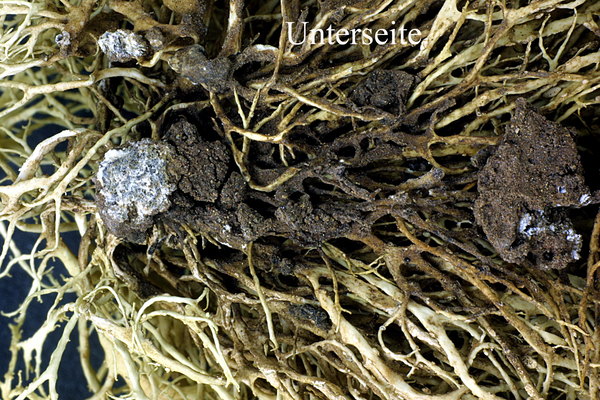
Felix Schumm - CC BY-SA 4.0
[10312], Spanien, Kanarische Inseln, La Gomera, westlich von Arure am Weg zum Mirador del Santo (Eremita del Santo), 28°07.9' N, 17°19.3' W, 820 m; wind-, nebel und lichtoffene, NO-exponierte Basaltfelsen mit viel Roccella und Ramalina. Leg. et det. Schumm 18.04.2003
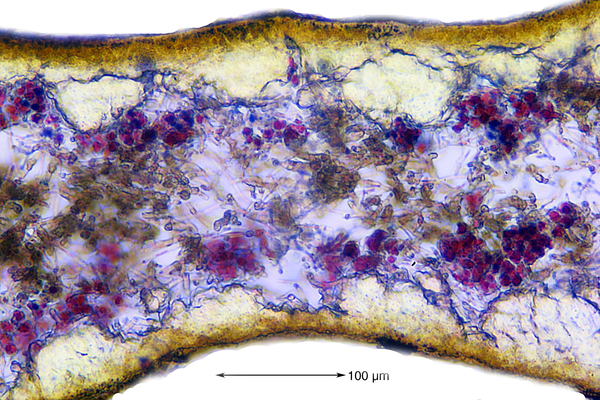
Felix Schumm - CC BY-SA 4.0
[10312], Spanien, Kanarische Inseln, La Gomera, westlich von Arure am Weg zum Mirador del Santo (Eremita del Santo), 28°07.9' N, 17°19.3' W, 820 m; wind-, nebel und lichtoffene, NO-exponierte Basaltfelsen mit viel Roccella und Ramalina. Leg. et det. Schumm 18.04.2003

Felix Schumm - CC BY-SA 4.0
[10312], Spanien, Kanarische Inseln, La Gomera, westlich von Arure am Weg zum Mirador del Santo (Eremita del Santo), 28°07.9' N, 17°19.3' W, 820 m; wind-, nebel und lichtoffene, NO-exponierte Basaltfelsen mit viel Roccella und Ramalina. Leg. et det. Schumm 18.04.2003
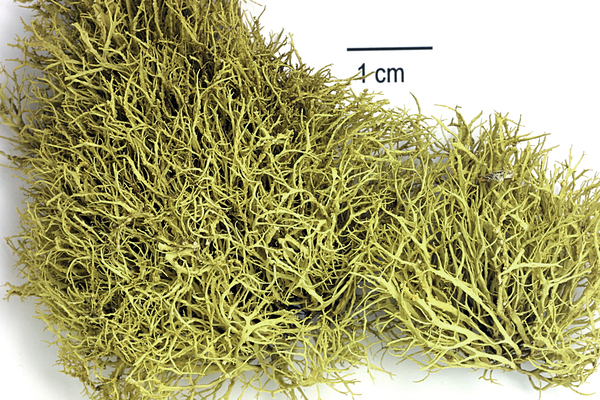
Felix Schumm - CC BY-SA 4.0
[10312], Spanien, Kanarische Inseln, La Gomera, westlich von Arure am Weg zum Mirador del Santo (Eremita del Santo), 28°07.9' N, 17°19.3' W, 820 m; wind-, nebel und lichtoffene, NO-exponierte Basaltfelsen mit viel Roccella und Ramalina. Leg. et det. Schumm 18.04.2003
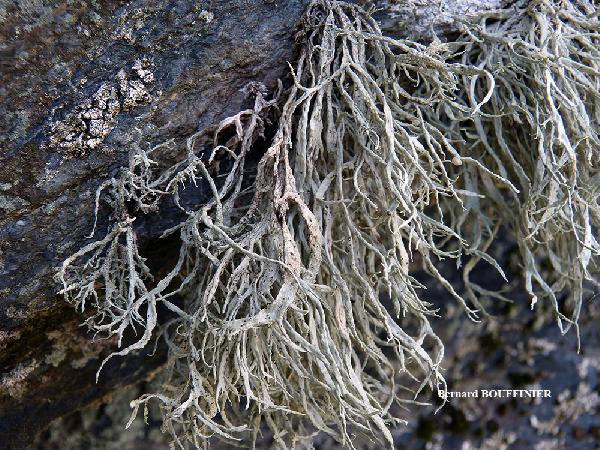
Alain Gerault - Source:http://www.lichensmaritimes.org/index.php?task=fiche&lichen=50&lang=en
France, Roc'h Tredudon

Alain Gerault - Source:http://www.lichensmaritimes.org/index.php?task=fiche&lichen=50&lang=en
France, Roc'h Tredudon

Bernard Bouffinier - Source:http://www.lichensmaritimes.org/index.php?task=fiche&lichen=50&lang=en
France, Argenton

Bernard Bouffinier - Source:http://www.lichensmaritimes.org/index.php?task=fiche&lichen=50&lang=en
France, Argenton
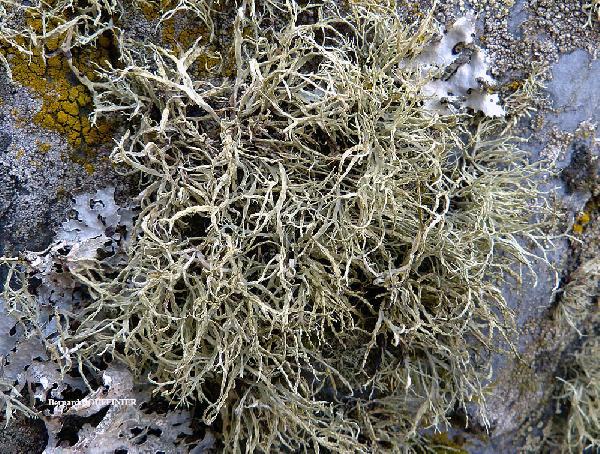
Bernard Bouffinier - Source:http://www.lichensmaritimes.org/index.php?task=fiche&lichen=50&lang=en
France, Roc'h Tredudon
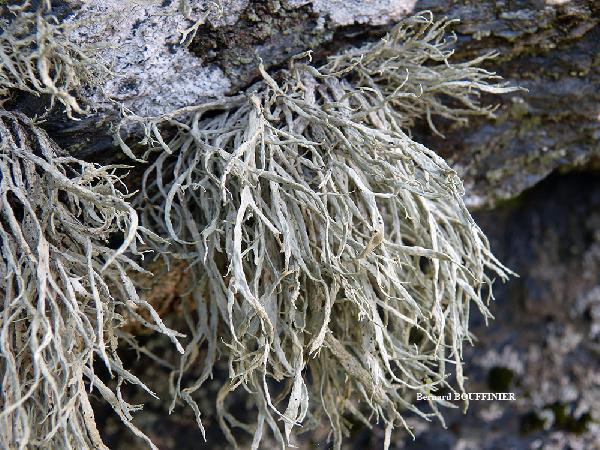
Bernard Bouffinier - Source:http://www.lichensmaritimes.org/index.php?task=fiche&lichen=50&lang=en
France, Roc'h Tredudon
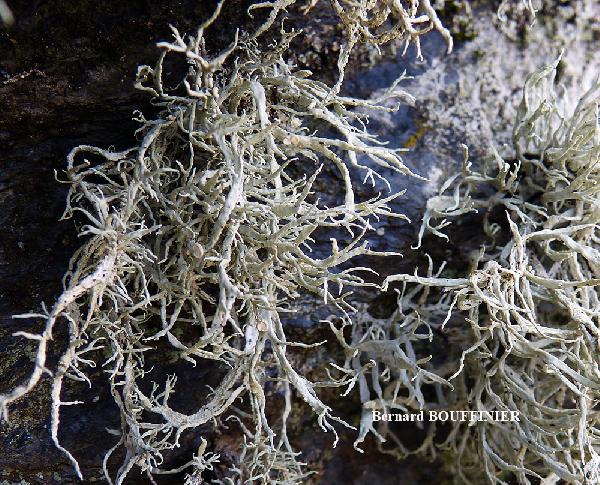
Bernard Bouffinier - Source:http://www.lichensmaritimes.org/index.php?task=fiche&lichen=50&lang=en
France, Roc'h Tredudon
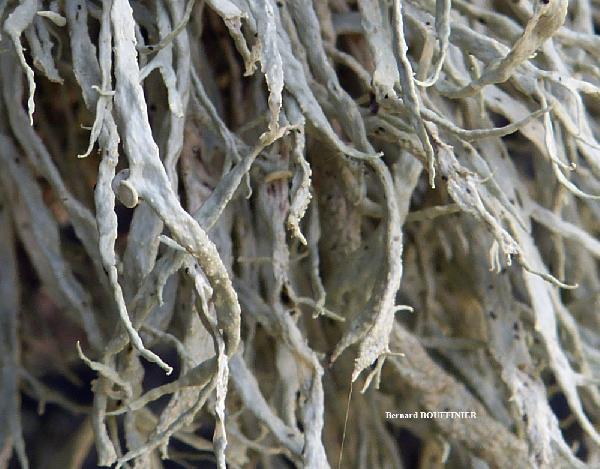
Bernard Bouffinier - Source:http://www.lichensmaritimes.org/index.php?task=fiche&lichen=50&lang=en
France, Roc'h Tredudon
Growth form: Fruticose
Substrata: rocks
Photobiont: green algae other than Trentepohlia
Reproductive strategy: mainly asexual, by soredia, or soredia-like structures (e.g. blastidia)
Most common in areas with a humid-warm climate (e.g. most of Tyrrenian Italy)
Commonnes-rarity: (info)
Alpine belt: absent
Subalpine belt: absent
Oromediterranean belt: absent
Montane belt: absent
Submediterranean belt: extremely rare
Padanian area: absent
Humid submediterranean belt: rare
Humid mediterranean belt: very rare
Dry mediterranean belt: absent

Predictive model
| Herbarium samples |


Felix Schumm – CC BY-SA 4.0
Image from: F. Schumm (2008) - Flechten Madeiras, der Kanaren und Azoren. Beck, OHG - ISBN: 978-3-00-023700-3


P.L. Nimis; Owner: Department of Life Sciences, University of Trieste
Herbarium: TSB (13204)
2001/12/07

Felix Schumm - CC BY-SA 4.0
[10312], Spanien, Kanarische Inseln, La Gomera, westlich von Arure am Weg zum Mirador del Santo (Eremita del Santo), 28°07.9' N, 17°19.3' W, 820 m; wind-, nebel und lichtoffene, NO-exponierte Basaltfelsen mit viel Roccella und Ramalina. Leg. et det. Schumm 18.04.2003

Felix Schumm - CC BY-SA 4.0
[10312], Spanien, Kanarische Inseln, La Gomera, westlich von Arure am Weg zum Mirador del Santo (Eremita del Santo), 28°07.9' N, 17°19.3' W, 820 m; wind-, nebel und lichtoffene, NO-exponierte Basaltfelsen mit viel Roccella und Ramalina. Leg. et det. Schumm 18.04.2003

Felix Schumm - CC BY-SA 4.0
[10312], Spanien, Kanarische Inseln, La Gomera, westlich von Arure am Weg zum Mirador del Santo (Eremita del Santo), 28°07.9' N, 17°19.3' W, 820 m; wind-, nebel und lichtoffene, NO-exponierte Basaltfelsen mit viel Roccella und Ramalina. Leg. et det. Schumm 18.04.2003

Felix Schumm - CC BY-SA 4.0
[10312], Spanien, Kanarische Inseln, La Gomera, westlich von Arure am Weg zum Mirador del Santo (Eremita del Santo), 28°07.9' N, 17°19.3' W, 820 m; wind-, nebel und lichtoffene, NO-exponierte Basaltfelsen mit viel Roccella und Ramalina. Leg. et det. Schumm 18.04.2003

Felix Schumm - CC BY-SA 4.0
[10312], Spanien, Kanarische Inseln, La Gomera, westlich von Arure am Weg zum Mirador del Santo (Eremita del Santo), 28°07.9' N, 17°19.3' W, 820 m; wind-, nebel und lichtoffene, NO-exponierte Basaltfelsen mit viel Roccella und Ramalina. Leg. et det. Schumm 18.04.2003

Felix Schumm - CC BY-SA 4.0
[10312], Spanien, Kanarische Inseln, La Gomera, westlich von Arure am Weg zum Mirador del Santo (Eremita del Santo), 28°07.9' N, 17°19.3' W, 820 m; wind-, nebel und lichtoffene, NO-exponierte Basaltfelsen mit viel Roccella und Ramalina. Leg. et det. Schumm 18.04.2003

Felix Schumm - CC BY-SA 4.0
[10312], Spanien, Kanarische Inseln, La Gomera, westlich von Arure am Weg zum Mirador del Santo (Eremita del Santo), 28°07.9' N, 17°19.3' W, 820 m; wind-, nebel und lichtoffene, NO-exponierte Basaltfelsen mit viel Roccella und Ramalina. Leg. et det. Schumm 18.04.2003

Alain Gerault - Source:http://www.lichensmaritimes.org/index.php?task=fiche&lichen=50&lang=en
France, Roc'h Tredudon

Alain Gerault - Source:http://www.lichensmaritimes.org/index.php?task=fiche&lichen=50&lang=en
France, Roc'h Tredudon

Bernard Bouffinier - Source:http://www.lichensmaritimes.org/index.php?task=fiche&lichen=50&lang=en
France, Argenton

Bernard Bouffinier - Source:http://www.lichensmaritimes.org/index.php?task=fiche&lichen=50&lang=en
France, Argenton

Bernard Bouffinier - Source:http://www.lichensmaritimes.org/index.php?task=fiche&lichen=50&lang=en
France, Roc'h Tredudon

Bernard Bouffinier - Source:http://www.lichensmaritimes.org/index.php?task=fiche&lichen=50&lang=en
France, Roc'h Tredudon

Bernard Bouffinier - Source:http://www.lichensmaritimes.org/index.php?task=fiche&lichen=50&lang=en
France, Roc'h Tredudon

 INDEX FUNGORUM
INDEX FUNGORUM
 GBIF
GBIF
 DOLICHENS
DOLICHENS
